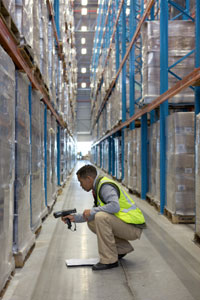In our article How UPC Bar Codes Work, we describe a bar code as a graphic that a computer reads by passing a scanner over it and then decoding the bars into numbers. Universal Product Code (UPC) symbols are among the oldest and most widespread examples of bar codes. You can find UPC symbols on packaged products at retail stores.
Today, bar codes exist in more places than just retail stores. Many industries have discovered that scanning a bar code is much faster than entering information manually with a keyboard, and with fewer chances of mistakes. To use bar code technology, a business first sets up its computer system to associate specific codes with certain information, such as product prices or employee profiles. Then, the business can print bar codes and use scanners plus bar code deciphering software to retrieve the information associated with those bar codes from the computer system. For example, in the shipping industry, a bar code printed on a package's shipping label provides a quick way for the shipping company to track that package. The shipper's computers save new information about a package's journey each time it is scanned, such as what city it is in and whether it will arrive on schedule.
While bar codes sound like a convenience rather than a necessity, some uses of bar codes could help save your life. Typically, these bar codes help people retrieve information quickly or ensure that information is accurate. Let's take a look at some of these potentially life-saving uses for bar codes.
One such bar code application is in medical ID wristbands that patients wear when they're admitted to hospitals. These wristbands include a printed bar code in addition to other patient information. When doctors and nurses treat the patient anywhere in the hospital, they use a hand scanner to scan the bar code on the wristband. That scanner has its own view screen or is attached to another computer display. Through a connection to the hospital's computer systems, an electronic version of the patient's chart is opened. By using a bar code system for accessing charts, medical professionals can reduce a patient's risk of receiving the wrong, or even life-threatening, medications or procedures [source: General Data Company].
The bar codes used in hospitals aren't the only ones that circumvent serious health and safety threats. Next, let's look at some critical uses of bar codes on things like medicines and consumer goods.



